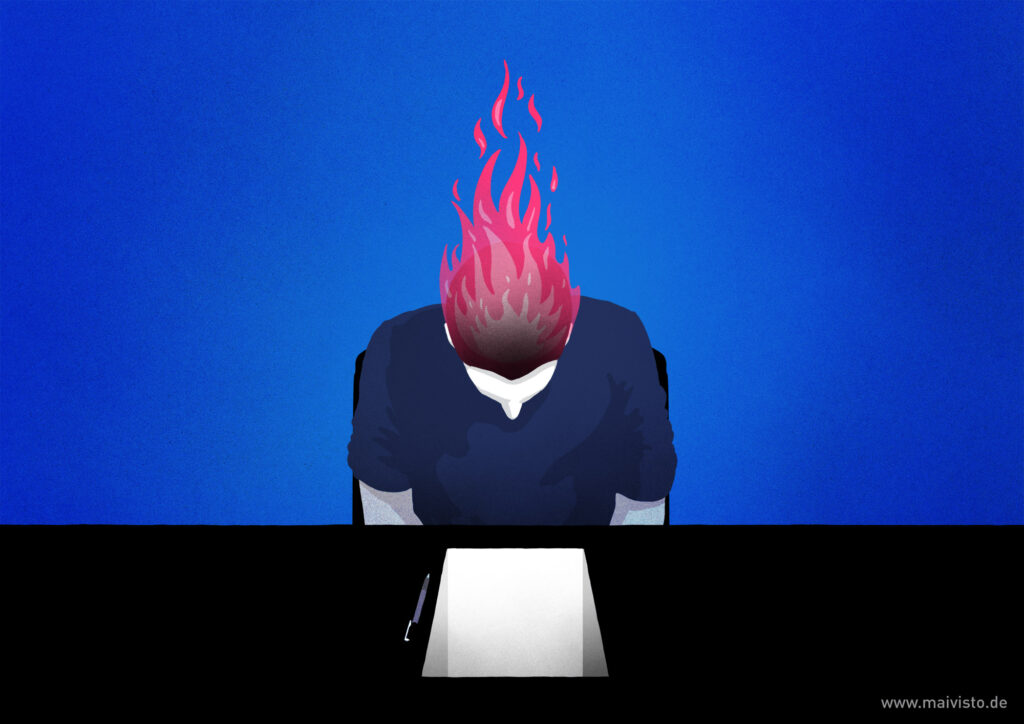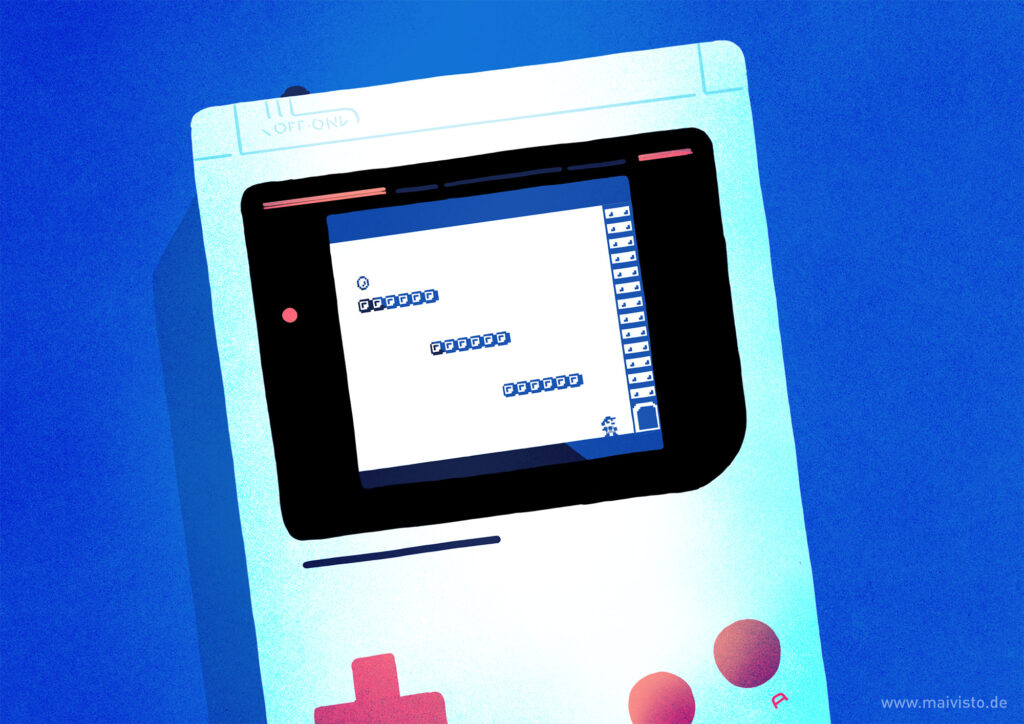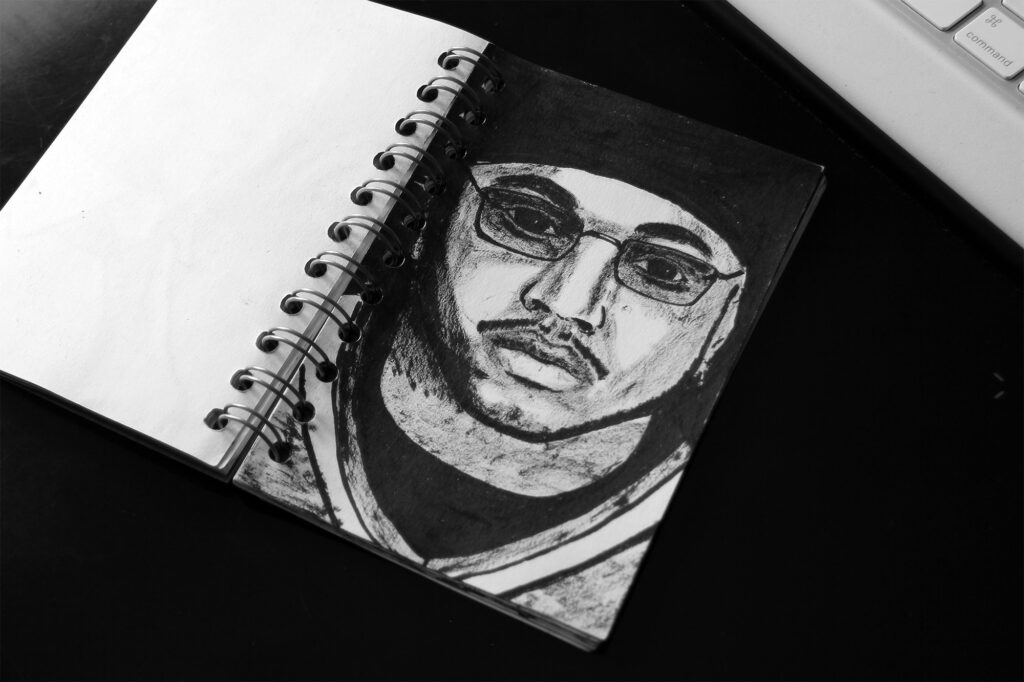Creativity at the push of a button (if there even is such a thing) requires many years of practical experience. Even then, we can never be sure that ideas will pop out of our heads exactly when we need them.
In my experience, however, simple tricks give our creative minds a little support. We can build triggers into our daily lives that put our entire body into work and creation mode.
For example, I always run the same Spotify playlist when looking for ideas for my Mindshot illustrations. Sometimes I even start with the same song for months (currently Merry Christmas Mr. Lawrence by Ryuichi Nakamoto). Most of the time, I listen to instrumental music, like movie soundtracks or video game tracks.
Additionally, when I want to work concentrated and effectively, I go to my favorite café and order a cappuccino and sparkling water. So far, this is my best routine to get work done.
Through such developed habits, we condition our minds. We create a button that puts us on autopilot, just like we brush our teeth when we get up in the morning. It signals to our brain, now it’s time to work.
Inevitably, I am reminded of the famous example of the cow whose mouth fills with saliva as soon as the farmer rings the bell. By habit, the ringing signals to the cow’s subconscious, now it’s time for food, and the legs automatically move towards the jug.


